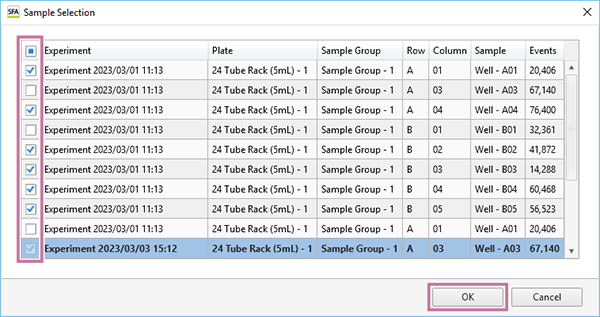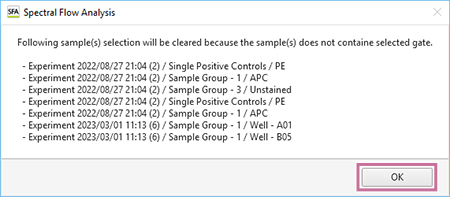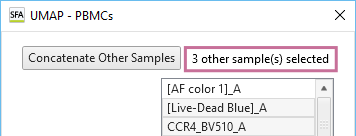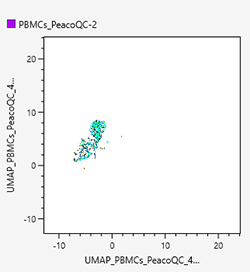Analyzing by Concatenating Multiple Samples (when UMAP and FIt-SNE)
When UMAP and FIt-SNE are performed, learning by concatenating multiple samples is possible. This allows them to be handled as a pseudo-large sample. After advanced analysis has completed, the analysis results related to only the sample selected among the concatenated sample data are displayed on the worksheet. The operating procedure is the same for both UMAP and FIt-SNE.
- Transfer the samples to be concatenated to the [Analysis] tab with [Start Analysis] in advance.
- Display the dialog for configuring the learning conditions, then click [Concatenate Other Samples].

The [Sample Selection] dialog appears.
- Place check marks in the checkboxes for the samples to concatenate, then click [OK].
The dialog displays all of the samples on the [Analysis] tab.

Selected samples that can be concatenated are displayed.
The following samples are excluded.
- Sample where a gate selected as a target for running advanced analysis does not exist
- Sample where there is no fluorochrome selected in the [Fluorochrome] list
- Check the message, then click [OK].

The number of samples to be concatenated is displayed.

- Set the fluorochromes to use as inputs and the parameters for learning, then click [OK].
The selected samples are concatenated and analyzed.

- Show the result of other concatenated sample.
The results of the other concatenated samples can be checked on the plots generated on each worksheet.


